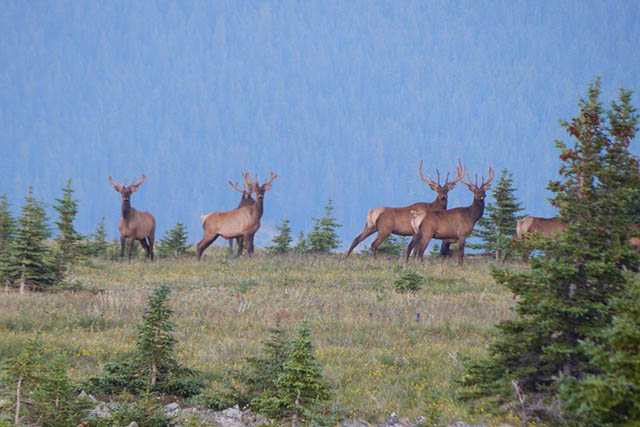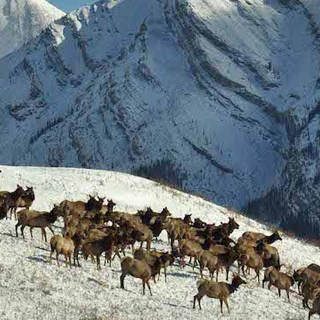Bull Elk Ecology
Bull elk ecology in a partially migratory herd and the effect of migration, predation risk, and forage on trophy quality
 The Ya Ha Tinda elk herd is one of the most iconic elk herds in Canada, providing high quality accessible trophy hunting for many generations of hunters. In 1977, the largest typical bull elk in Alberta was harvested from the Ya Ha Tinda elk herd and is still ranked by Boone and Crockett as the 8th largest typical bull harvested in North America, scoring 419 6/8 B&C points. Three of the top 10 bull elk harvested in Alberta have been taken from the Ya Ha Tinda elk herd.
The Ya Ha Tinda elk herd is one of the most iconic elk herds in Canada, providing high quality accessible trophy hunting for many generations of hunters. In 1977, the largest typical bull elk in Alberta was harvested from the Ya Ha Tinda elk herd and is still ranked by Boone and Crockett as the 8th largest typical bull harvested in North America, scoring 419 6/8 B&C points. Three of the top 10 bull elk harvested in Alberta have been taken from the Ya Ha Tinda elk herd.
This herd is representative of many of the large elk herds in North America, with a migration pattern that crosses a combination of public, protected (Banff National Park) and private land. Additionally, this herd is exposed to a diverse suite of predators, the same predators that are expanding their range in most landscapes occupied by elk.
We have learned a lot by following the adult female elk in the Ya Ha Tinda population, but we have not yet directly addressed questions about effects of recovering predators, habitat and population dynamics on bull elk ecology. With new long-term funding secured for the female component of our study, we are now poised to complement our long-term research on female population dynamics by initiating a four-year study of bull elk in this important elk population.
The main objective of this research is to test how land-use (burns, industrial-landscapes and protected areas), current harvest management and predation effect bull elk ecology. Our research will assist provincial managers in setting harvest regimes to maximize the hunting opportunity and trophy potential, not only for this elk population, but throughout their range. The addition of bull elk to our well established long-term research will provide valuable information that can be translated to other populations since this herd has resident and migrant segments, like many elk herds in North America, and has varying levels of predation from wolves, bears, and humans.
Student: Hans Martin
